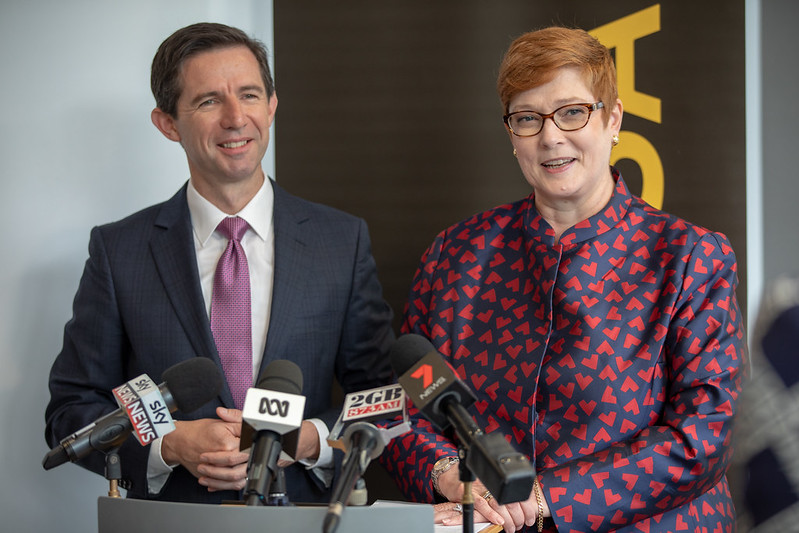
At least five things prompt me to write this piece. First, as the defence adviser at the Indian high commission in Canberra from 2005 to 2008, I was initially impressed by the single Department of Foreign Affairs and Trade. Exports were booming and Australia seemed to be perfectly happy to be the quarry for China’s hunger for resources.
Second, while I was in the midst of that tenure, the media were agog with reports about a ‘thousand spies’ and the influence Beijing seemed to have already built up through some sympathetic politicians across the spectrum of parties and factions. (Paul Monk’s book Thunder from the silent zone: rethinking China appeared in 2005 when this anxiety was just beginning to take hold.)
Third, as a seaman, I’m well aware of the symbiotic relationship between flag and trade and the links between prosperity and security. Undoubtedly, many seamen in Australia are as well aware, and a corollary to the third reason is that the 2019 Goldrick Seminar held by the Australian Naval Institute last month was themed ‘Maritime trade and its implications for Australia’s defence’.
Fourth, in recent months, there has been unprecedented concern in Australia, even in places that were in strong denial in the 2000s, about Chinese penetration into the very structure and sinews of the lucky country. And lastly, the architect of the merger in 1987 and prime minister of a very maritime nation, Bob Hawke, crossed the bar a few months ago.
Is it now time for a rethink of the merging of ‘flag and trade’ into one department? There’s little debate within Australia recommending a split, but, as an empathetic observer, to me it’s a move worth considering.
In a perception that grew stronger over the years, I felt that the single-roof approach for foreign affairs and trade might ultimately turn out to be suboptimal for Australia. Hopes for greater coherence between the two policy areas were not misplaced in 1987 when the merger happened. Efficiency in administration makes sense. However, as Canadian scholar Rachel Calleja says—in the context of foreign aid programs—efficiency doesn’t automatically lead to effectiveness of the purposes of statecraft.
To be fair, there are some matters that fall into the grey zone. Did Australian exports, and consequent prosperity, go up because of the merger, or was it mainly due to the rising tide of economic growth in much of Asia and major policy changes, especially in the billion-plus nation of China? And would the demand for what Australia mined or pumped in increasing volumes through the 1990s and until recent years have been less if the departments had stayed separate?
Arguing that the US, with its distinct departments of State and Commerce, formed a deeper trading relationship with China is also fair. However, the argument perhaps underscores that a merger isn’t essential and that, at the same time, security can’t be made effectively subordinate to prosperity no matter how sweet the sound of cash registers may be. That quandary could exist in any system, particularly if the political leadership is attuned to the shorter term and corporate lobbying is highly effective.
However, what separation may provide is a higher level of good friction between departments in making decisions. Each department would need to look at issues more carefully, argue more convincingly for its position, and then come to a resolution. The two-roof process isn’t easy or smooth, and perhaps it’s not as quick as when a single department head and a single minister are the key deciders. Nonetheless, it’s perfectly possible that coordination would be efficient enough with separate departments to enable policy decision-making and execution and monitoring of consequences to be done effectively.
But it is the nature of commerce and business that quarterly and annual bottom lines dominate rather than the longer-term needs of a nation. This is not to say that mergers of other departments are not necessary. In matters of home affairs, for example, Canberra and New Delhi have each done a great deal that has helped efficiency and increased effectiveness.
During my posting, I got a clear sense that those primarily responsible for ensuring security seemed to be in the Australian Defence Force, in the Department of Defence, in some think tanks and in agencies like ASIO.
Elsewhere in the government, and especially in DFAT, there seemed to be a degree of exuberance about continued prosperity and a measured dismissal of voices warning of China’s deepening penetration into almost everything Australian that mattered. Currently, unease and anxiety are very high and many of the voices that one heard then are being listened to more carefully now (among them are signatories to the second open letter by China scholars in response to the first).
A difficult poser, therefore, is this: would Canberra’s concerns, Beijing’s unhappiness about curbs being imposed, and awareness of Chinese inroads be less if flag and trade were separate? Would a separation (as between the Department of Defence and DFAT) of foreign affairs from trade have enabled more careful consideration of the ‘thunder from the silent zone’ or the ‘silent invasion’ (from Clive Hamilton’s book title) that some agencies were hearing then?
Or, is it when the voices get louder, the evidence more worrying, the demand for resources weaker, and Chinese actions and protests more strident that the matter comes into sharper focus? What degree of worry does it take for security to be given more weight than prosperity? And did DFAT’s focus on resources contribute to Australia’s taking its eyes off the ball that Beijing has proved so effective at punting? Perhaps this is something to think about a bit differently …

